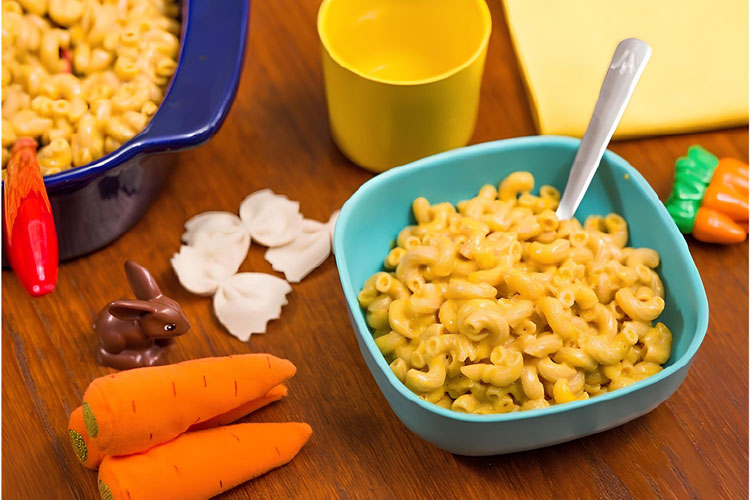
Macarrones con queso y zanahoria cremosos
- Home
- Live Well Blog
- Macarrones con queso y zanahoria cremosos
octubre 2, 2024
Recetas
Sabrosa y cremosa delicia de queso... ¡¿Y hasta tiene vegetales?! Esta receta es perfecta para padres de niños pequeños, y las sobras siempre son exquisitas.
Ingredientes:
- 3 tazas de zanahorias ralladas
- ½ taza de agua
- 5 cucharadas de jugo de naranja
- 3 tazas de pasta integral
- 1 taza de queso cheddar rallado
- Sal y pimienta a gusto
Instrucciones:
- Hierve la pasta siguiendo las instrucciones del paquete. Cuela la pasta, pero deja un poco de agua en la cacerola. Reserva la pasta.

- En la misma cacerola en la que herviste la pasta, coloca zanahorias, ¼ de taza de agua y jugo de naranja. Cocina la preparación a fuego fuerte hasta que el agua comience a hervir.
- Tapa la cacerola y reduce el fuego a medio. Cocina todo por 15-20 minutos o hasta que las zanahorias estén muy blandas. Retira la preparación del fuego y déjala enfriar por 10 minutos.
- Procesa la mezcla de zanahorias en una licuadora para conseguir una textura suave y agrega de a ¼ de taza de agua por vez hasta lograr la consistencia deseada.
- Combina la pasta y la mezcla de zanahorias en la cacerola. Agrega queso y mezcla todo. Cocina la preparación a fuego medio hasta que el queso se derrita completamente.
- Añade sal y pimienta a gusto.
¡Consejo!
Puedes duplicar los ingredientes de esta receta, cocinar solo una vez y congelar la mitad para comer al menos dos veces. Recalienta la porción que congelaste cuando tengas un día muy ocupado o no tengas ganas de cocinar.

Una observación sobre “esconder” o “camuflar” los vegetales
En muchas recetas, como en esta, se usan vegetales rallados, picados o mezclados en el plato. Esto ayuda a agregar sabor, textura y nutrientes. Es posible que tu hijo no note que hay vegetales en el plato, y eso está bien, ya que no es lo mismo que “esconder” los vegetales en una comida a propósito a fin de engañar a los niños para que los coman. No se recomienda “esconder” o “camuflar” los vegetales en un plato de modo que los niños no sepan que están allí. Esto puede salir mal. Es mejor sincerarte con tu hijo sobre qué contienen las comidas que le sirves. Tu hijo aprenderá a confiar en ti, y esto ayuda a crear una relación positiva con la alimentación.
Información de nutrición:
Porciones: 4
Por porción:
- Calorías: 382 kcal
- Carbohidratos: 69 g
- Proteína: 19 g
- Grasas totales: 7 g
- Grasas saturadas: 4 g
- Grasas trans: 0 g
- Colesterol: 15 mg
- Fibra: 8 g
- Azúcares totales: 8 g
- Sodio: 284 mg
- Calcio: 251 mg
- Folato: 47 mcg
- Hierro: 3 mg